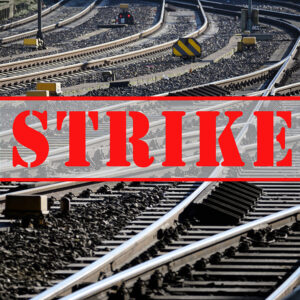Counterpoint: 2023 Won’t Mark a Union Revival, and That’s Good News

For an alternate viewpoint, see “Point: The ‘Year of the Strike’ Could Be a Turning Point for the Labor Movement.”
There’s no denying that unions notched impressive victories this year, including substantial increases in compensation for auto workers, actors, screenwriters, airline pilots and delivery drivers. Regarding work days lost, union strikes in 2023 were the largest in 40 years — big enough to affect the overall job market.
But it would be premature to declare a resurgence of the U.S. labor movement or to argue that most workers would have benefitted from one.
The historical trendline is unmistakable: In 2022, one in 10 U.S. workers belonged to a union, down from one in seven in 1996 and one in five in 1983, when the first comparable data were collected. The decline of union membership has been remarkably steady over the last four decades. Since 2000, the year-to-year change in the unionization rate has been positive only six times, and those small gains have quickly been reversed.
Moreover, the latest data show that unionization is increasingly concentrated in the government sector, especially local services like K-12 education and public safety. Only 6 percent of private-sector workers are union members.
Another sign that unions are a waning force in the labor market is that the union wage premium (i.e., how much more union members are paid than similar workers who aren’t represented by a union) has fallen sharply. Over the last decade-and-a-half, the union wage premium in the private sector has been slashed in half from about 25 percent to 12.5 percent — evidence that unions don’t exert the kind of influence at the bargaining table that they used to.
The erosion of union power is rooted not in Big Business union-busting but in broader economic forces: globalization, technological change (including automation), shifts in industrial composition, and the rise of the gig economy. Those trends aren’t likely to reverse themselves any time soon.
Whether you celebrate or mourn the decline of organized labor, remember two things. First, workers have a right to organize and advocate for themselves. This leads me to the second point: Unions like to position themselves as promoting the interests of all workers, but their priority is mostly their own members. Sometimes, that comes at the expense of other workers.
For example, although higher wages for union workers are nothing to scoff at, they should be weighed against their not-so-obvious effects on the economy. By keeping pay above competitive market levels, unions reduce the number of workers unionized companies are willing to hire, making it harder for outsiders to find a job. States with policies that favor unions consistently experience slower employment growth and higher unemployment rates than other states, even after controlling for a host of other factors.
Moreover, unions generally advocate for seniority-based pay and benefits, which makes it harder to reward effective young workers. Unions often block employers from adopting the most efficient production methods, undermining companies’ profitability and, in some cases, driving them out of business.
Rigid work rules imposed by unions can degrade organizational culture. One study surveyed thousands of American workers and found that those in unionized companies reported “reduced empowerment, less effective teamwork and less support for career development and advancement within the company.”
These things trickle down to consumers. Researchers have documented, for example, that product recalls are significantly more common at unionized workplaces than non-unionized ones, possibly because higher wages crowd out investments in technology upgrades that would improve product quality.
Although unions tout fairness in the workplace, my colleague and I have found a connection between strong union protections and hiring discrimination. States that give unions more power to recruit members and raise funds have 30 percent higher rates of hiring discrimination against older women compared to other states. These findings suggest that high union pay encourages employers to reject job applicants they might view as less productive.
This doesn’t mean unions need to be demonized for organizing out of self-interest, but it does mean more states should reconsider tipping the scales in unions’ favor. It also means most workers shouldn’t worry about unions’ weakening grip on the labor market.



